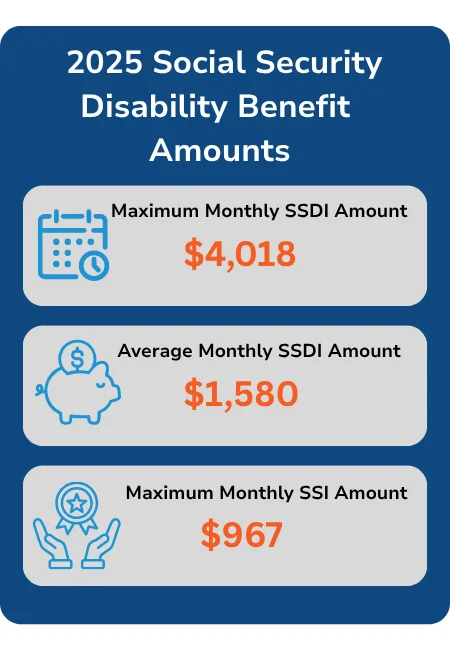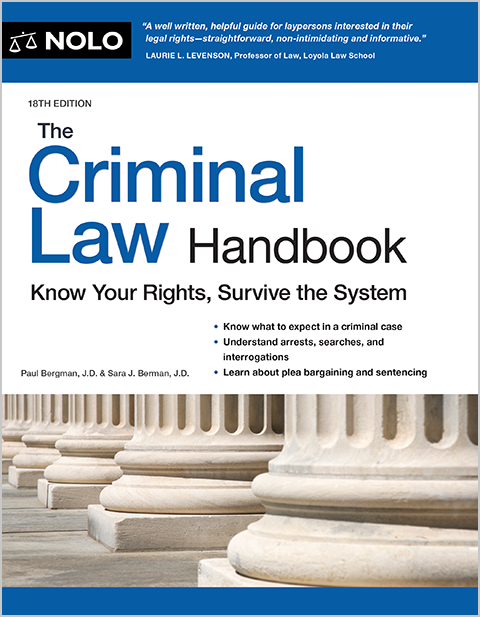Learn how Social Security determines whether your dyslexia is disabling, when you can qualify for benefits, and what accommodations are available at work.
Dyslexia—also called developmental reading disorder—is broadly defined as a learning disability that affects your reading comprehension. While most people think of dyslexia as the tendency to mix up the order of words and letters, the term encompasses a wide variety of abnormal language processes. Dyslexia is usually characterized by the inability to interpret or process symbols properly, resulting in trouble understanding written words. A related disorder, dyscalculia, makes it difficult to understand numbers and perform mathematics.
Many people with dyslexia have found success working in a wide variety of fields—such as sports, science, and the arts—while several notable historical figures are popularly believed to have struggled with the disorder. Under the Americans with Disabilities Act (ADA), you're entitled to reasonable accommodations at your job to help you work with dyslexia, and in some cases having dyslexia or dyscalculia can increase your chances of getting Social Security disability benefits.
- Is Dyslexia or Dyscalculia a Disability?
- Are Dyslexia and AHDS Considered Disabilities in the Social Security "Blue Book"?
- Can You Get Disability Benefits for Dyslexia Without Meeting the Listing?
- How Hard Is It to Get Disability for Dyslexia as an Adult?
- SSDI and SSI Benefit Amounts for Dyslexia-Related Disability Claims
- How to Apply for Disability Benefits
- Getting Legal Help for Your Disability Claim
Is Dyslexia or Dyscalculia a Disability?
Social Security defines disability as the inability to perform substantial gainful activity—in other words, you can't work full-time—due to a "medically determinable" severe impairment. Because dyslexia and dyscalculia are often managed with adaptive methods such as building in extra time to read, these disorders alone aren't usually sufficiently limiting to qualify for Social Security disability benefits.
However, dyslexia and dyscalculia often occur in conjunction with other disorders, such as attention deficit hyperactivity disorder (ADHD). Because Social Security is required to look at how your combined impairments affect your ability to work, any limitations you have from dyslexia on top of another condition may tip the balance in your favor when determining whether you're disabled.
Are Dyslexia and AHDS Considered Disabilities in the Social Security "Blue Book"?
Social Security considers some medical conditions to be especially severe. The agency places these conditions in a special category known as the Listing of Impairments (or "Blue Book," as a nod to the historical color of the manual). There are around 100 listed impairments, each of which has a specific set of requirements that need to be present in your medical record in order for Social Security to decide that you "meet a listing" and award you disability benefits.
Dyslexia isn't one of the specific impairments included in the Blue Book, but learning disorders more broadly are evaluated under listing 12.11, for neurodevelopmental disorders. This listing covers diagnoses that cause abnormalities in cognitive processing, such as dyslexia and dyscalculia, as well as deficits in attention and impulse control that are characteristic of ADHD.
In order to qualify for disability benefits due to dyslexia or ADHD using listing 12.11, your medical records must contain documentation of at least one the following sets of symptoms:
- frequent distractibility, with difficulty sustaining attention and organizing tasks
- hyperactive and impulsive behavior
- significant difficulties learning and using academic skills, or
- recurrent motor movement or vocalization ("tics").
It's not enough just to exhibit the signs and symptoms of dyslexia or ADHD, however. You'll also need to show that these learning disorders cause an "extreme" limitation in one, or a "marked" limitation in two, of the following four areas:
- understanding or using information (the ability to learn terms and procedures, understand instructions, and answer questions and provide explanations)
- interacting with others (the ability to ask for help when needed and keep social interactions free of excessive irritability or sensitivity)
- concentration and maintaining pace (the ability to start and finish work tasks in a timely manner), and
- adapting or managing oneself (the ability to regulate emotions, control behavior, and be aware and avoid risks).
"Marked" limitations are significantly limiting, but not to the extent that "extreme" limitations are. You can think of marked limitations in an area as being able to do those functions by yourself, but only with a lot of help. Having an extreme limitation in an area means that you're rarely able to perform those functions independently, if at all. It's rare for people with dyslexia to have an extreme limitation in these functional categories unless low IQ is also involved.
For applicants with dyslexia, the most relevant functional areas addressed by the listing will likely involve "understanding or using information" and, to a lesser extent, "concentration and maintaining pace." But it's very difficult to show that dyslexia alone causes a marked limitation in both of these categories, or the two other areas contemplated by the listing. You'll have a better shot at meeting listing 12.11 if your medical records show additional limitations resulting from ADHD or another cognitive disorder. For example, if you struggle to follow written instructions and also have outbursts with coworkers due to low frustration tolerance (a common symptom of ADHD), you'll have a stronger case for disability.
Can You Get Disability Benefits for Dyslexia Without Meeting the Listing?
Dyslexic adults who don't meet the criteria of listing 12.11 can still qualify for disability benefits if their dyslexia interferes enough with their functioning to keep them from performing all jobs. The process by which Social Security determines whether you can do any work is called assessing your residual functional capacity (RFC).
Your RFC is a set of limitations, physical and mental, that reflect the most you can do in a work environment. The agency assesses your RFC by reviewing your medical records, daily activities, and doctors' opinions to determine what tasks you're able to do on the job and what tasks you should avoid. For example, somebody with dyslexia may have an RFC that requires their employer to provide oral instructions for multi-step tasks or allow them to have extra time to finish projects involving writing or typing.
Social Security compares your current RFC with the demands of your past work to see if you could still do that work today. If not, the agency will then determine whether any other jobs exist that you could do despite your dyslexia, considering additional non-medical factors such as your age, education, and skill set. For applicants under the age of 50, this usually means that they need an RFC that rules out even simple, sit-down work, while those 50 years of age and older may qualify for benefits using the medical-vocational grid rules even if they could do sit-down or light work.
How Hard Is It to Get Disability for Dyslexia as an Adult?
When Social Security reviews disability applications, the agency looks for evidence about how serious the potentially disabling condition is and the degree to which it affects the ability to work. For most claimants, this means they need to show that their dyslexia keeps them from doing even unskilled work that doesn't require much reading or writing, such as dishwashing. But because the vast majority of people with dyslexia are able to overcome hurdles in their daily routines with minor adjustments, it's very unlikely that somebody with dyslexia will be able to qualify for disability based only on the disorder.
Even in the rare cases where somebody with dyslexia is completely unable to read or write, Social Security will likely find that you're able to work unless you have a physical condition that limits your ability to walk or to lift and carry objects. And for older claimants for whom dyslexia may have an impact on their transferable skills, the agency will probably question whether your dyslexia is a significant enough barrier, since it didn't interfere with your ability to learn the skills in the past.
So while Social Security recognizes that dyslexia, as a learning disorder, can cause hardship and frustration, the agency is also aware that most people with dyslexia or dyscalculia can live ordinary lives and be gainfully employed on a continual basis. Because of this, without evidence of an additional mental or physical condition, the odds of getting disability benefits—Social Security Disability Insurance (SSDI) or Supplemental Security Income (SSI)— for dyslexia are quite low.
SSDI and SSI Benefit Amounts for Dyslexia-Related Disability Claims


Social Security doesn't pay disability benefits based on the type of disabling condition you have. Rather, the amount you'll receive if you win your claim depends on whether you qualify for SSDI or SSI, the two disability programs offered by the agency. SSDI eligibility is based on your work history and how much you've paid into the program by way of payroll (or self-employment) taxes, while SSI is a needs-based benefit for people with limited income and assets.
For 2025, you can receive up to $4,018 per month in SSDI, but the average amount is much lower, at $1,580. (This is because SSDI payments are calculated based on your past earnings history, which can vary significantly between beneficiaries.) SSI monthly benefits in 2025 are $967 per month minus any countable income you have in that month. Many states provide a modest supplemental benefit to the base SSI amount, depending on your living situation.
How to Apply for Disability Benefits
Filing for Social Security benefits is a fairly straightforward process. Most claimants choose to apply online at Social Security's official website. If you're filing for SSDI, you can complete the entire application online. SSI claimants who are over 18, have never been married, and have never applied for SSI before can also submit the full application online.
You can also apply for disability benefits by calling 800-772-1213 from 8 a.m. to 7 p.m. Monday through Friday to speak with a representative. If you're deaf or hard of hearing, you can call the TTY number at 800-325-0778. Or, you can go in person at your local Social Security field office. Some offices require that you make an appointment first, so it's best to call ahead and ask.
Getting Legal Help for Your Disability Claim
Getting disability benefits for dyslexia or dyscalculia alone isn't easy. Many claimants file for Social Security disability because they're unable to do their usual line of work but aren't aware of their ADA rights to reasonable accommodations—which may include providing you with text-to-speech software or special fonts geared towards people with dyslexia. If your employer has rejected your request for an accommodation, you may want to consult an employment lawyer to help assert your rights.
You have the right to appeal a disability denial if you disagree with the agency's decision. While you aren't obligated to hire an attorney at any stage of the appeals process, it's generally a good idea. An experienced disability lawyer can help you gather the records you'll need to show that your medical impairments are disabling, handle communications with Social Security, and represent you at a hearing, if necessary. Disability attorneys don't get paid unless you win, so there's little risk in getting legal help for your appeal.
- Is Dyslexia or Dyscalculia a Disability?
- Are Dyslexia and AHDS Considered Disabilities in the Social Security “Blue Book”?
- Can You Get Disability Benefits for Dyslexia Without Meeting the Listing?
- How Hard Is It to Get Disability for Dyslexia as an Adult?
- SSDI and SSI Benefit Amounts for Dyslexia-Related Disability Claims
- How to Apply for Disability Benefits
- Getting Legal Help for Your Disability Claim

